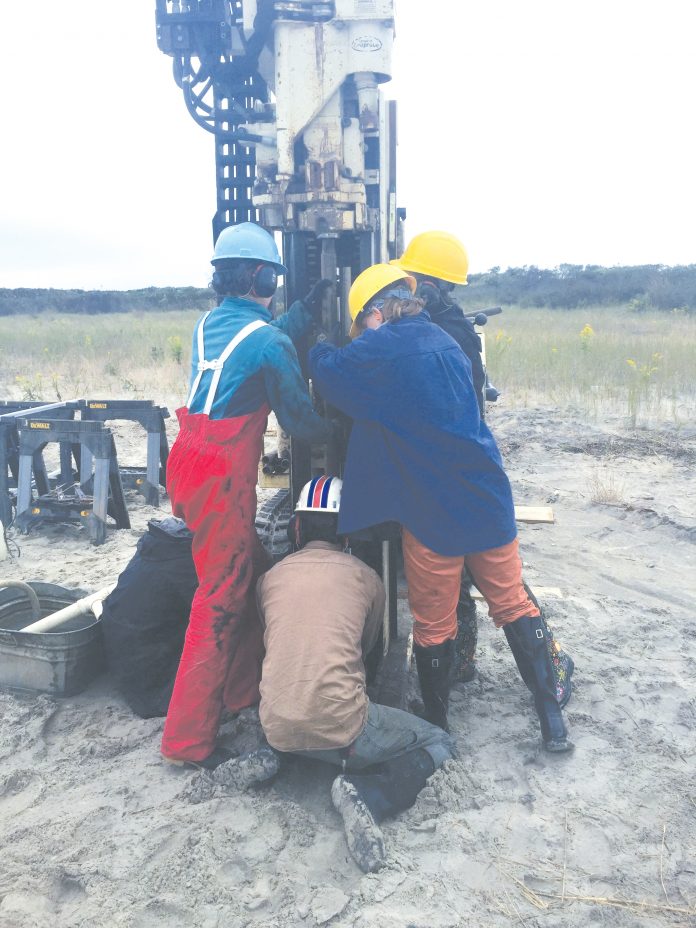
By Adolphus Ames –
Dr. Christopher Hein, a coastal ge- ologist and associate professor at Vir- ginia Institute of Marine Science, is scheduled to give a presentation at the Island Theatre in Chincoteague Satur- day, July 2. The presentation will focus on the history and future of the barrier islands.
“My research focuses on the forma- tion and changes of the Virginia Barrier Islands,” Hein said. “During the presen- tation, I will be covering Chincoteague’s 2,000-year history and how Assateague Island formed and why it grew. In the end, I will talk about a big project that’s been funded by the commonwealth. It’s a model of Chincoteague Inlet that we built to simulate tides, storm currents, andsedimentmovementinordertopre- dict future changes to the area’s geolog- ical system.”
Hein, who had always been fasci- nated by the formation of the land around him, became interested in the barrier islands after driving around
on the Shore. “Coastal islands change daily due to the influence of tides,” he said. “Compared to mountain forma- tion it’s a much faster and interesting process.”
Hein predicts that the geological makeup of the region will change dras- tically over the next few hundred years. “Sea levels are rising much faster than 20 years ago due to ice cap melting and ocean waters warming,” he said. “Is- lands are moving 15 feet per year to- ward the mainland. Toms Cove Isth- mus could possibly breach and move in front of Wallops Island, reorienting Chincoteague Inlet and changing the way waves hit the island.”
Transformations of this magnitude could impact the region negatively. “More flooding and frequent higher tides are a possibility,” Hein said. “A long-term result of this would be the retreat and abandonment of towns. Residents would have to move inland.”
There are some efforts that can be taken to delay these geological trans-
formations. “The Netherlands have hardened their shorelines to prevent encroaching land,” Hein said. “That can be done on the Shore, but would re- quire billions of dollars. Serious deci- sions would have to be made alongside investments in infrastructure.”
Hein is presenting on behalf of a large team, consisting of 15 scientists from the University of Delaware, Ran- dolph-Macon College, and the Water Institute of the Gulf in Baton Rouge, La. The presentation will begin at 7 p.m. Tickets are $8 online at https:// betterunite.com/MuseumofChincote- agueIsland and $10 at the door.


